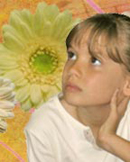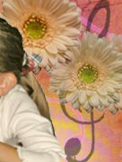
A creative learning environment does not simply include the physical arrangement of the classroom and materials/resources available to students. More important to a creative learning environment is the emotional climate, energy, and motivation of the students. A creative environment has three perspectives: personal, socio-cultural, and educational. When a classroom shows evidence of these three perspectives, students thrive and the creative process has the best chance of occurring.
From a personal perspective, the classroom should exhibit a feeling of comfort where the culture of the class encourages risk taking and experimentation. It should also be one that is safe enough to allow unpredictable outcomes. Students have the ability to create their own content, develop individual projects based on their interests, and authentically assess themselves as well as their peers. Socio-cultural perspective is evident in a classroom where there is respect for cultural differences and interests. In this classroom students interact without pressure to conform, and their projects reflect the diverse backgrounds. Their ideas and achievements, no matter how different, are accepted. In fact, students feel free to share personal differences and ideas without risk of criticism and unfair judgment from peers or adults. The educational perspective addresses the extent to which opportunities are provided not only within the classroom, but also within the community to share projects and innovative ideas. New methods and technologies are used to keep students motivated and interested in the learning process. Mentors and role models are sought out to assist students with specialized interests in their domain. These three perspectives are evident in every level of gifted education, pre-k through 12th grade.
Climate for Creativity
The following characteristics are necessary for a creative organization based on research by Goran Ekvall. Although it is geared toward business environments, as you read, think about how it is also applicable to a classroom. Click on the title of each panel to reveal its contents.
Challenge
Challenge refers to the emotional involvement of the members of the organization in its operations and goals. A high-challenge climate is seen when people experience joy and meaningfulness in their jobs, and therefore, they invest much energy. Low challenge indicates alienation and indifference; a common sentiment and attitude is apathy and lack of interest for the job and the organization.
Freedom
Freedom refers to the independence in behavior exerted by the people in the organization. In a climate where this kind of freedom prevails, people make contacts to give and receive information and discuss problems and alternatives. They plan and take initiatives of different kinds and make decisions. The opposite climate would include people who are passive, rule-fixed, and anxious to stay inside the established frameworks and boundaries.
Dynamism/Liveliness
Dynamism and liveliness refer to the eventfulness of the organization. In highly dynamic situations, new things are happening all the time and alterations in ways of thinking about and handling issues often occur. A kind of psychological turbulence exists, which is described by people in those organizations as “full speed,” “go,” “breakneck,” “maelstrom,” and the like. The opposite situation could be compared to a slow jog-trot with no surprises. There are no new projects, no different plans. Everything goes in usual way.
Trust/Openness
Trust and openness refer to the emotional safety in relationships. In an environment with a strong level of trust, everyone in the organization dares to put forward ideas and opinions. Initiatives can be taken without fear of reprisals and without ridicule in case of failure. Communication is open and straightforward. However, where trust is missing, people are suspicious of each other and count on high expenses for mistakes that may occur. Without trust, people are afraid of being exploited and robbed of their good ideas.
Idea Time
Idea time refers to the amount of time people can and do use for elaborating new ideas. In the high idea-time situation, impulses and fresh suggestions are discussed and tested. This available idea time is not planned or included in the task assignment; people tend to use these possibilities as creative moments. In the reverse case, every minute is booked and specified. Time pressure makes it impossible to think outside the instructions and planned routines.
Playfulness/Humor
Playfulness and humor refer to the spontaneity and ease that is displayed. A relaxed atmosphere with jokes and laughter characterizes the organization, which is high in this dimension. The opposite climate is characterized by gravity and seriousness. The atmosphere is stiff and gloomy, and jokes and laughter are regarded as improper.
Conflicts
Conflicts refer to the presence of personal and emotional tensions (in contrast to idea tensions in the debates dimension in the organization). When the level of conflict is high, groups and single individuals dislike each other and the climate can be characterized by “warfare” with gossip and slander going on. Plots and traps are the usual elements in the life of the organization. In the opposite case, people behave in a more mature manner; they are caring and considerate. They have psychological insight and control of impulses.
Idea Support
Idea support refers to the ways new ideas are treated. In the supportive climate, ideas and suggestions are received in an attentive and kind way by bosses and workmates. People listen to each other and encourage initiatives. Possibilities for trying out new ideas are created. The atmosphere is constructive and positive. When idea support is low, the reflexive “no” is prevailing. Every suggestion is immediately refuted by a counterargument. Fault-finding and obstacle-raising are the usual styles of responding to ideas.
Debates
Debates refer to the occurrence of encounters and clashes between viewpoints, ideas, and differing experiences and knowledge. In the debating organization, many voices are heard and people are keen on putting forward their ideas. Where debates are missing, people follow authoritarian patterns without questioning.
Risk Taking
Risk taking refers to the tolerance of uncertainty exposed in the organization. In the high risk-taking case, decisions and actions are prompt, arising opportunities are taken, and concrete trying is preferred to detailed investigation and analysis. In a risk-avoiding climate, the mentality is cautious and hesitant. People try to be on the “safe side.” They set up committees and “cover themselves” in many ways before making a decision.
Climate for Creativity
![]()







